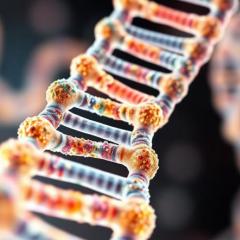 By Dr Fiona McMillan
By Dr Fiona McMillan
Dr Andrew Brooks is the Group Leader of the Cytokine Receptor Signalling Group at the University of Queensland Diamantina Institute (Australia), and is part of an international team of scientists who have determined that unstructured parts of Class 1 cytokine receptors are able to interact with the inner membrane of cells.
Class 1 cytokine receptors are a critical group of proteins that enable the transmission of chemical signals from the outside of cells to the cell nucleus. In this way they are able to influence which genes are turned on and off, particularly during blood cell development, tissue growth and during immune interactions. Mutations in these receptors can either disrupt these important signal pathways or even cause a signal to stay permanently on; this can lead to a variety of diseases, including cancer.
Yet very little was known about the structure of these receptors, particularly the intracellular domain (the part of the protein on the interior of a cell). As a consequence, this limited our understanding of how these proteins interact with other molecules in the cell and thus carry out their work.
The international collaborators have now investigated the structure and membrane interactions of the prolactin receptor (PRLR) and the growth hormone receptor (GHR), both of which are class 1 cytokine receptors. This represents the first comprehensive look at the structures of the intracellular domain of this important class of proteins. The paper was published in Biochemical Journal.
Brooks worked with colleagues at the University of Copenhagen in Denmark, the Institut Necker Enfants Malades in France and the University of Queensland’s Institute for Molecular Bioscience (IMB). Their research reveals that the intracellular domain of this class of receptors is quite disordered, enabling it the flexibility to interact with a wide variety of molecules and respond rapidly to stimuli from both inside and outside the cell. Moreover, the researchers discovered that one region of the intracellular domain is able to directly interact with the cell membrane. It’s not yet clear why the protein would do this. One theory is that it may help position the receptor closer to its molecular partners, making it more efficient.
Having a clearer picture of the intracellular domains of PRLR and GHR will facilitate further research into precisely how each of these proteins interact with other molecules, and this in turn will help scientists better understand how these interactions go awry in diseases such as cancer.
But as the authors point out, “the implications of our results reach far beyond the PRLR and GHR.” Indeed their findings provide a new framework to better understand the role of many other cytokine receptors and suggest that cell membranes may play a more active role in cellular signals than previously thought.
Media: UQDI Communications Manager Kate Templeman, +61 7 3443 7027 or 0409 916 801, k.templeman@uq.edu.au



